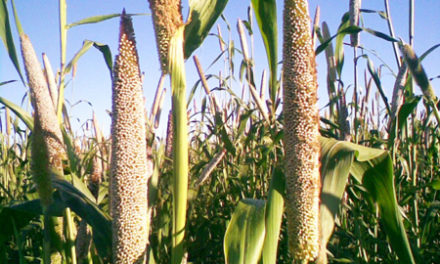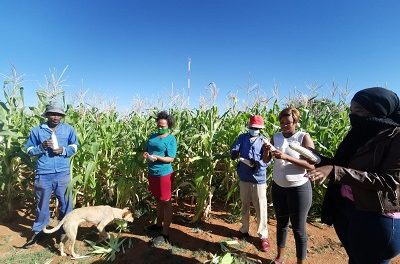
Environmental impacts of genetically modified crops

Haidee Swanby of African Centre for Biosafety and Manjo Smith of Namibian Organic Association (Photograph by Hilma Hashange)
Environmental impacts of genetically modified organisms include the disruption of food web in the ecosystem which have a negative impact on pollinating insects such as bees and buterflies. Pet resistance (Bt) genes from genetically modified crops disrupt the food web in the soil.
According to Swanby, ecological health begins in the soil as it is the most vital source of nutrients for plants. “There is an increase in chemical use. In the USA, for example, farmers used ten times more glyphosate on their crops in 2007 than they did in 1993,” she said.
Animal tests have shown the disturbance of liver, pancreas and kidney fuctions, allergic reactions and immune responses as well as inflammations, ulcerations and excessive growth of stomach and gut lining. Altered level of existing, or presence of new toxins and new allergens were also recorded in animals.
A total of about 77% of genetically modified crops are grown in the United States of America, Argentina and Brazil, with South Africa topping the list at 9th place in the global status of commercial genetically modified crops. Two major types of genetically modified organisms have been identified in the market, namely Herbicide tolerance which constitutes 59% of the market composition and Stacked varieties with 26%. Pest resistance (Bt) contributes 15%. With 47%, Soya has the highest percentage in the genetically modified crops range, followed by maize with 32% and cotton with 15%.
Over 50% of Namibia’s maize is imported from South Africa, however, no indications are shown whether the imported maize is genetically modified.”However, contamination of crops is inevitable,” says Swanby. For quality assurance, food products bear organic certification labels that guarantee that the product is grown and handled according to strict organic production standards and that farms are inspected to ensure compliance with the standards.
Several farms and organic shops exist in Namibia, namely Farm Krumhuk, Farm Rogers, Greenspot Organics, Agricultural Training Centre Namibia, Humulus Horticulture, Farm Belissima, EcoSo Dynamics, Bloublommetjieskloof, Body food Namibia as well as Farm Springbockvley. Organic products sold range from maize, !nara products as well as sorghum. “All organic products sold in the country are marked with the Namibian Organic Association Mark,” said Manjo Smith of the Namibian Organic Association.










































